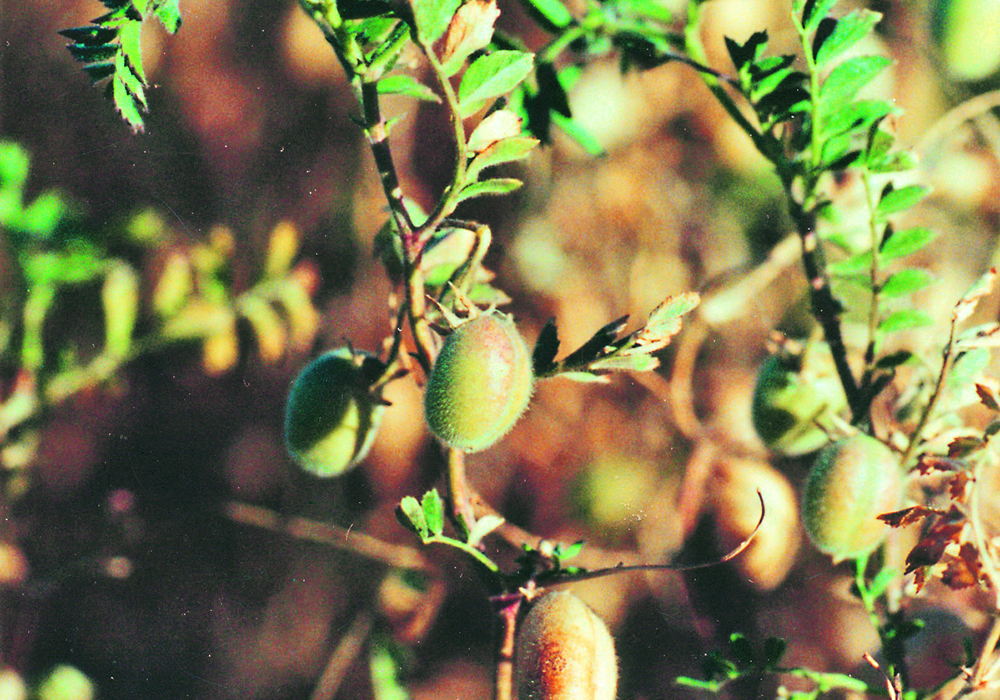India’s government stockpile of chickpeas is rapidly being depleted.
Sunil Kumar Singh, additional managing director for NAFED, a government procurement and distribution agency, said it came into the 2020-21 crop year holding 1.5 million tonnes of the commodity.
NAFED bought another 2.05 million tonnes from Indian farmers this year for a total supply of 3.55 million tonnes.
“That was a huge size for a government agency to manage,” he said during a webinar organized by the India Pulses and Grains Association.
“In the last three years, NAFED has been making very, very heavy purchases,” said Singh.
Read Also

Volatile temperatures expected for this winter
DTN is forecasting a lot of temperature variability in the Canadian Prairies this winter. Precipitation should be close to average.
The agency bought 1.1 million tonnes last year and 2.75 million tonnes the year prior to that.
COVID-19 put a big dent in the current stockpile as the government provided one kilogram of pulses per month to 19.5 million households for a three-month period between April and June 2020.
It is following up that program by distributing one kilogram of whole chickpeas per month to India’s migrant laborers through November.
Those two programs will reduce the stockpile by 1.5 million tonnes. About 30 percent of the leftover stocks will be distributed to India’s army and other institutions.
The remainder will be sold on the open market resulting in no government carryout heading into the upcoming rabi, or winter crop.
“It will provide stability to the market,” said Singh.
Navneet Singh Chhabra, director of Shree Sheela International, said India began the crop year with 200,000 tonnes of kabuli chickpeas and produced another 373,000 tonnes of the crop, which is well below normal.
He expected the country will export 115,000 tonnes of kabulis and consume another 265,000 tonnes.
Consumption will be well below last year’s level of 420,000 tonnes because kabulis are a premium product consumed in hotels, restaurants and weddings, which have all been impacted by COVID.
“Because of this, we are expecting that consumption will be down around 35 to 40 percent,” said Chhabra.
Kabuli carryout is forecast at 155,000 tonnes when the crop year ends in January, 2021.
N.P. Singh, director of the Indian Institute of Pulses Research, said the country’s explosive growth in chickpea production is no anomaly.
Production has skyrocketed to 10.9 million tonnes in 2019-20, up from 7.33 million tonnes five years ago, reducing the need to import Canadian yellow peas.
“In the country we say we have a pulse revolution,” he said.
Breeding advancements have helped chickpea production move from northern India to central and southern India.
“This was a major challenge for chickpea breeders and I think we did well,” he said.
Breeders had to create varieties better suited to the warmer climate of central and southern India.
They were able to develop varieties that matured in 90 to 100 days and delivered yields similar to those grown in northern India.
“That is how everything happened,” said Singh.
The other big advancement has been the creation of erect varieties with pods at the top that are able to be harvested by machines.
“Now the chickpeas in a large part of the country are mechanically harvested,” he said.
Indian farmers are also able to now grow chickpeas tolerant to herbicides.
Eventually, he wants to see all chickpea varieties containing the herbicide tolerance and mechanization traits.
Breeding programs are now focusing on “super early” varieties that will mature in 85 to 90 days.
Breeders have developed Bt chickpeas that produce a toxin that protects them from insect pests. Those crops are awaiting regulatory approval.
“When they are able to see the light of day perhaps we will be able to control insects in much better ways than we are doing through the insecticides,” said Singh.
Another focus is making chickpeas more nutrient and water efficient to decrease input costs.
They also want to make chickpeas that have better traits for processors. Breeders have created a variety that has 25 to 26 percent protein levels, compared to 18 to 20 percent in traditional varieties.
Singh noted there is plenty of room for demand growth in India to accommodate increased yields.
















